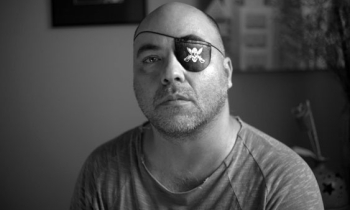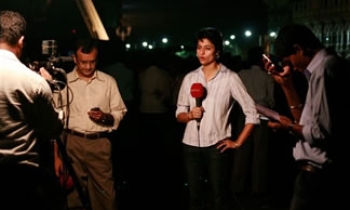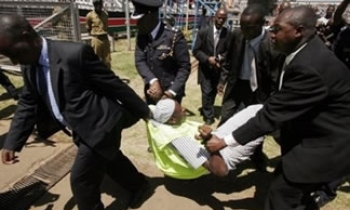It might not quite have packed the punch of "Dewey Defeats Truman" or "Gore Wins."
But TV reports and newspaper headlines Wednesday that mistakenly stated that 12 miners had been recovered alive from the rubble of a West Virginia mine explosion left journalists struggling to explain how such a massive inaccuracy could spread across the nation's news services.
Newspapers in the center and Eastern portions of the country were affected most, as the lateness of the news - officials didn't announce that only one of 13 trapped workers at Sago Mine had survived until about 3 a.m. - led publications such as the New York Times, the St. Petersburg Times and the Tampa Tribune to distribute copies with headlines reading "12 Miners Found Alive, Family Members Say," " "They're Alive' " and "12 Miners Survive Ordeal."
And as news organizations strain to discover what went wrong, critics wonder if the pressure to serve an ever-quickening 24-hour news cycle pushed journalists into getting too emotional and publishing information before it was adequately confirmed.
"I didn't double-source these reports, I sourced them (100 times)," said self-described "warrior journalist" Geraldo Rivera, who handed his cell phone to several jubilant relatives of the mine workers Tuesday, while reporting for Fox News Channel.
Rivera, who spent nearly three hours at Sago Baptist Church, said relatives of the miners, personnel at the mine's command center and West Virginia Gov. Joe Manchin all confirmed the upbeat news.
But during a news conference Wednesday, mine officials said personnel in their command center were mistakenly told 12 miners survived and news spread as excited employees phoned friends and relatives. The result was an unknowing game of telephone, in which journalists thought they were getting confirmation from separate sources who were actually relaying the same mistaken information.
"The pastor was saying a thank-you sermon on the balcony of the church and people were bouncing around like they had won the Super Bowl or the lottery," said Rivera, who learned the truth while driving to his hotel room. "Eight-year-old kids were saying, "My daddy's alive.' If you didn't get emotionally involved, you wouldn't get emotionally involved when your baby is born."
But while TV reporters could correct their mistaken reporting immediately - CNN anchor Anderson Cooper was first to burst the bubble at 2:46 a.m. - many newspapers were stuck with erroneous stories and incorrect headlines.
An official at the Newseum in Arlington, Va., said about 125 newspapers on its site had mistaken front pages - half the 250 newspapers it saw that featured the story on the front page Wednesday morning.
In Florida, newspapers such as the St. Petersburg Times (daily circulation: 301,183), Tampa Tribune (212,608) and Orlando Sentinel (221,175) worked hard to get stories touting the miners' survival into their pages before pressing deadlines, only to find the true story emerge after most of their newspapers had been printed.
At the Times, once editors saw an Associated Press story around midnight Tuesday featuring comments from Manchin confirming 12 survivors, they approved a headline reading " "They're Alive' " for a 1 a.m. deadline, said managing editor Stephen Buckley. The Times, like many East Coast newspapers, did correct its Web site by 3:30 a.m.
"There was nothing in the stories or on broadcast that made us think we shouldn't be putting this story in the paper," said Buckley. "I think we did the best we could under the circumstances."
Some Eastern and Central time zone newspapers did manage to catch the error. The Kansas City Star caught 40,000 copies out of its total 280,000 publication run; the Chicago Tribune caught 261,000 copies of about 634,000 (grabbing 22,000 copies off trucks just before they were delivered) and the Pittsburgh Post-Gazette delivered 114,000 corrected copies of a total 256,000 newspapers.
"The lessons is that the story isn't over, even when you think it's over," said Post-Gazette editor David Shribman, who said about 30 staffers worked on the paper's coverage of the disaster, which occurred less than 100 miles from their offices. "Anything can happen when you're dealing with human beings at 3 in the morning."
But other critics were less kind. Greg Mitchell, a columnist for Editor & Publisher magazine, called the incident "one of the most disturbing media performances of its kind in recent years," faulting news outlets for reporting survivors without "nailed down" sourcing and sacrificing their skepticism for emotion.
"Maybe we just have to accept that this is what happens in today's news environment," said Brian Stelter, creator of the cable news Web log TV Newser.
Comparisons to some of the inaccuracies that surfaced in coverage of Hurricane Katrina - in which New Orleans police and municipal officials spread tales of widespread violence that later proved false - rankled MSNBC news executive Mark Effron.
"In cable news . . . we're reporting news as it's being made, in all its rawness," said Effron, vice president of news-daytime programming for MSNBC. "To sit here and armchair quarterback . . . is ridiculous."
And the Post-Gazette's Shribman noted that whatever pain journalists may feel now, pales in comparison to the anguish of relatives.
"Tomorrow our paper will be in the recycling bin or worse," said Shribman. "These people will still be mourning their dead. And that lasts a lot longer than tomorrow's paper."









